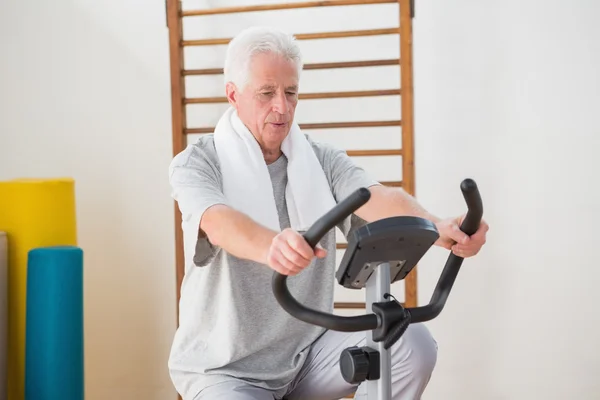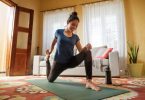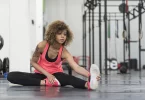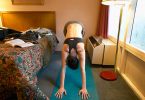You do not have to be young to lead an active lifestyle. Adopting a fitness program that works for you as you age is essential.
Begin with getting rid of whatever myth and misconception about aging and activity you’re allowing to set you back, such as ‘there’s no point to exercising because I’m already elderly; Exercising puts me at a risk of falling; I am disabled; I’m too weak; I have too many aches and pains, etc.’
While all these might seem like valid arguments, they are nothing but myths that wants to set you back and stop you from fully enjoying your old age. Fitness comes with an abundance of physical and mental benefits, eventually increasing your longevity and enhancing your quality of life.
Below are a few fitness tips for senior citizens that can help you get started on your fitness journey and maintain your health year-round:
7 Fitness Tips For Senior Citizens
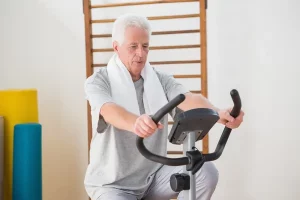
Here are seven must-know fitness tips that senior citizens need to be aware of:
1. Become active
Physical activity strengthens the immune system. Your body is more capable of fighting infection and inflammation the more active you become.
It’s not necessary to engage in strenuous activities. Exercises with less impact prove to be very effective. There are so many very easy exercises for seniors.
Consider cycling, walking, swimming, or other low-impact aerobics. If you can, engage in 20 to 30 minutes of moderate-intensity exercise per day to meet the recommended total of 150 minutes per week. You can strengthen your muscles further by engaging in yoga or weightlifting.
Ensure to find an exercise program that feels the most comfortable for you.
2. Start gradually
Take things slow and easy. You can start with a quick jog or walk once weekly, stopping when you feel you have reached your tolerance limit.
You can gradually increase or intensify your workouts in subsequent weeks. This way, you won’t experience overload or discouragement, and as a result, you’ll be able to see real progress over time.
If you’re just coming to grips with certain movements or workout patterns, it’s also critical to proceed slowly.
For instance, poor technique can do more harm than good, whether you’re lifting weights or engaging in body weight workouts. Be mindful of your motions and posture. Don’t be afraid to ask a fitness professional for advice on making particular motions safely or fixing your form.
3. Get a fitness partner
A fitness buddy can make your routine more enjoyable and keep you motivated and accountable.
A partner can offer some friendly competition if you choose to play a sport. You also get ample time to socialize, talk and connect with your workout companions.
Family, coworkers, and friends are all suitable workout companions. And if you have problems finding partners, check around to see if any group fitness programs provide an exercise routine for seniors within your local neighborhood or gym.
4. Try strength training
Strength or resistance training can tremendously benefit senior citizens. According to medical research, strength-training exercises can combat weakness, frailty, and other debilitating health conditions in older adults.
When done regularly, say 2 to 3 days per week, strength training exercises can build muscle strength and muscle mass and preserve bone density and vitality with age.
You can start with small strength training exercises and gradually make progress.
5. Exercise at home
As a senior citizen, it might not be easy to make trips to the gym for your workout. Hence, one of the most important fitness tips for senior citizens is to exercise at home.
You can get a lot out of your workout when you do it from home. It can also be more comfortable and convenient for your needs.
6. Maintain a balanced diet
Diets high in fruits, vegetables, and lean meats strengthen your immune system and shield you from contagious viruses and bacteria.
Antioxidants are found in large quantities in fruits and vegetables. Antioxidants keep your body healthy and guard your cells against harm.
Additionally, you should limit your intake of fatty and sugary meals because they can weaken your immune system and cause internal inflammation. Limit the amount of alcohol you consume as well.
7. Be attentive to your body
Exercise should never be painful or unpleasant. If you feel dizzy or short of breath, experience pain, or break out in a cold sweat, stop exercising immediately and call your doctor.
The best method to deal with injuries is to prevent them in the first place. Delay your routine if a joint is red, swollen, or sensitive to the touch. If you constantly feel pain or discomfort after working out, try working out with less intensity.
8. Engage in water aerobics
Water aerobics are one of the best forms of exercise for senior citizens, because it reduces the stress on joints due to the buoyancy of water, making it an excellent choice for seniors with arthritis or joint pain. It also provides resistance, which helps in building strength and cardiovascular endurance.
Many community centers and gyms offer water aerobics classes specifically designed for seniors. Alternatively, you can perform simple exercises like water walking, leg lifts, and arm curls in a pool.
9. Stretch often
Regular stretching helps maintain flexibility and range of motion, which are crucial for performing daily activities and reducing the risk of injuries. It can also alleviate muscle stiffness and improve circulation.
Incorporate stretching into your daily routine, ideally after a warm-up or workout when muscles are more pliable.
Focus on major muscle groups and hold each stretch for 15-30 seconds. Simple stretches like hamstring stretches, calf stretches, and shoulder stretches are effective.
10. Try dancing
Dancing improves cardiovascular health, balance, and coordination. It also serves as a social activity, which can enhance mental well-being and reduce feelings of isolation.
You can join a dance class tailored for seniors, such as ballroom, line dancing, or Zumba.
Dancing can also be done at home with the help of online tutorials or simply dancing to your favorite music. Aim to dance for at least 30 minutes a few times a week.
Conclusion
Becoming physically active is one of the healthiest decisions you can make as you age, but it must be done safely. Consult your doctor before starting, especially if you have a previous condition. Inquire about any activities you should avoid.

